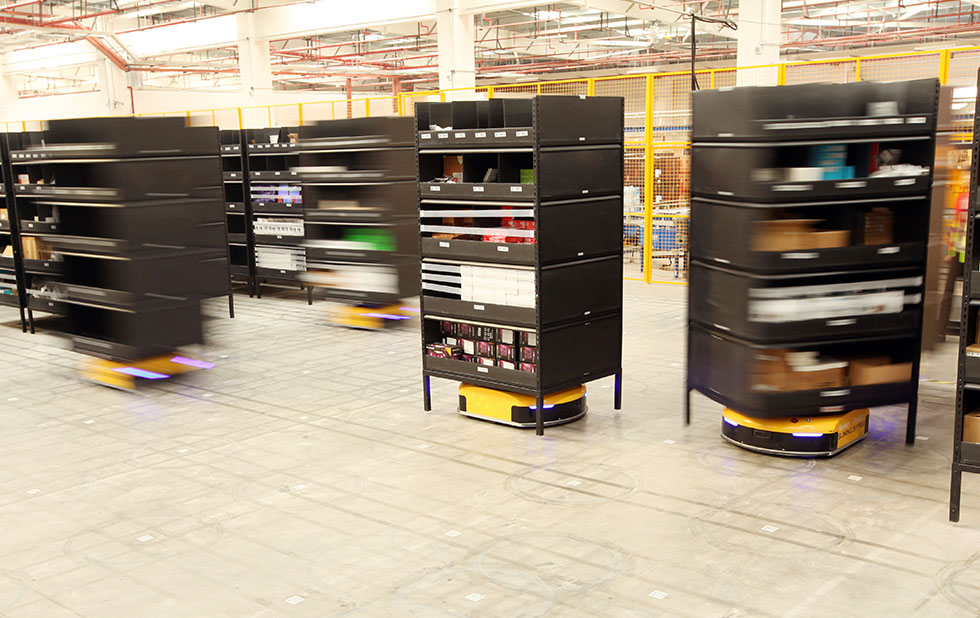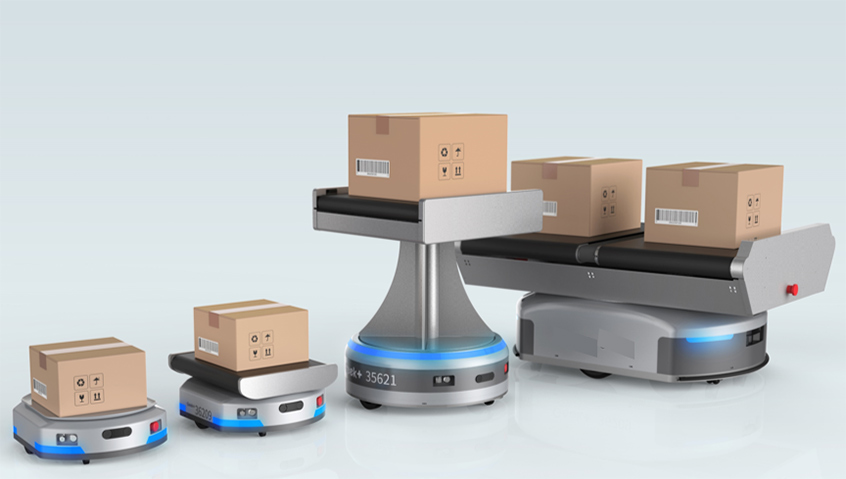The Future of AMRs & Robotics in Order Fulfillment

In recent years, autonomous mobile robots (AMRs) have moved from a novelty solution pursued by only a handful of the largest companies, such as Amazon, Omcron, Shopify, and Teradyne, to a mainstream technology capable of bringing real benefits to a range of operations both large and small.
What are AMRs in Warehousing?
Autonomous mobile robots are able to move through an environment without being overseen directly by an operator. These AMRs understand and interpret their environment in order to function as a form of asynchronous transportation through various sensors, software, computers, and maps within a warehouse. This automation solution allows for successful robotic fulfillment and efficient warehouse operations as they speed up the delivery process for various products in a more effective way. By using these robots for certain tasks, there’s an increase in productivity as picking time for orders is reduced.

These impressive improvements and advancements are only the tip of the iceberg when it comes to the role that AMRs have to play in distribution and faster fulfillment. As the technology underlying AMRs continues to develop and advance, it has the potential to dramatically change many aspects of how AMRs are used by operations. With updated AI software, AMRs learn how to adapt their behavior accordingly, even before they enter a new area. This means they can avoid high-traffic areas, obstacles, or large crowds of workers present during breaks or shift changes.
Download Our Guide To Autonomous Mobile Robots (AMRs)
Below, we explore five of the most important trends and advancements that we expect will shape the future of AMRs.
1. Reduced Costs
Autonomous mobile robots are already an affordable automation option for many operations, requiring a lower level of investment (and faster deployment) than many fixed systems. That being said, AMRs are likely to become even more affordable in coming years as prices decrease, due to a number of factors.
AMR technology is constantly evolving as manufacturers develop new and better components, processors, and controls. This constant iteration allows manufacturers to streamline their warehousing operations: Units can be built more quickly and more efficiently, and with less material and less expensive components. This has an immediate effect of reducing the cost of individual units.
Additionally, as the AMR industry grows, manufacturers are now realizing the economies of scale in the procurement of components and the manufacturing process. As in any other case, mass production leads to lower costs for both the producer and the end consumer.
While AMR’s do cut costs, the workforce should not fear as the Bureau of Labor Statistics (BLS) predicts a 10% increase in overall Transportation and Warehousing industry employment by 2030. Updated AMR technologies allow labor to be utilized in value added opportunities in the warehouse rather than menial labor.
2. Greater (and More Varied) Functionality
AMRs already come in a variety of types, each of which is capable of performing unique tasks within an operation. AMRs continue to adapt and advance as the technology is adopted by new operations In doing so, they will become adept at an even wider range of tasks and applications in the future.

Exactly what these advancements will look like is difficult to predict exactly, but it is clear that much of this new functionality will be driven by several factors:
- Advancements in navigation technology
- Artificial intelligence (AI) and machine learning
For example: As robotic vision and sensors become more sophisticated, AMR navigation will be more accurate and be able to recognize a wider range of specific objects and react differently depending on the object. Instead of just recognizing an obstruction like a rack column and finding a way around it, the AMR will be able to tell the difference between a rack and a lift truck. The lift truck is a temporary obstruction that will cause a much shorter disruption than a permanent obstruction.
3. Increased Connectivity
Data has always been an important part of order fulfillment, and it is only going to become more important in the coming years.
In addition to bringing us more data to leverage in designing and running our operations, the future is also going to provide greater access to this data. It is this access to data, which will enable all warehouse technologies (including AMRs) to become more responsive, more integrated, and, simply put, more intelligent.
4. More Adoption
The companies that have currently incorporated AMRs into their operations already understand the value and return on investment that they can bring to a company’s bottom line. AMR manufacturers will also gain a wider scope of applications.

As these companies prove the ROI of AMRs and the novelty of the technology continues to disappear, it is only natural that more operations will realize the unique value that AMRs bring and adopt the technology themselves. As AMR manufacturers find more applications, they will tailor new designs that will automate new tasks.
Benefits of Automated Warehouses
Unlike most conventional material handling equipment and systems, AMRs lend themselves a scalable systems approach. The modularity, and flexibility of AMRs allow systems to be designed and implemented cost-effectively. After the system design is complete, virtually the entire system is able to be designed and integrated rapidly as a full system. Saving time and resources while reducing risk.
Autonomous mobile robots are already having a major impact on the order fulfillment industry. Operations that incorporate the technology into their workflows are able to lower their labor costs, reduce their reliance on an overstrained and unreliable labor pool, and improve their accuracy and efficiency.
As the technology continues to advance, though, this impact is only expected to become even greater. The trends discussed above outline just some of the potential paths that await us.
Whether or not autonomous mobile robots (AMRs) or another type of automation makes sense for your order fulfillment operation will depend largely on the specifics of your business. A skilled and trusted systems integrator can help you to determine the best path forward for your business.





